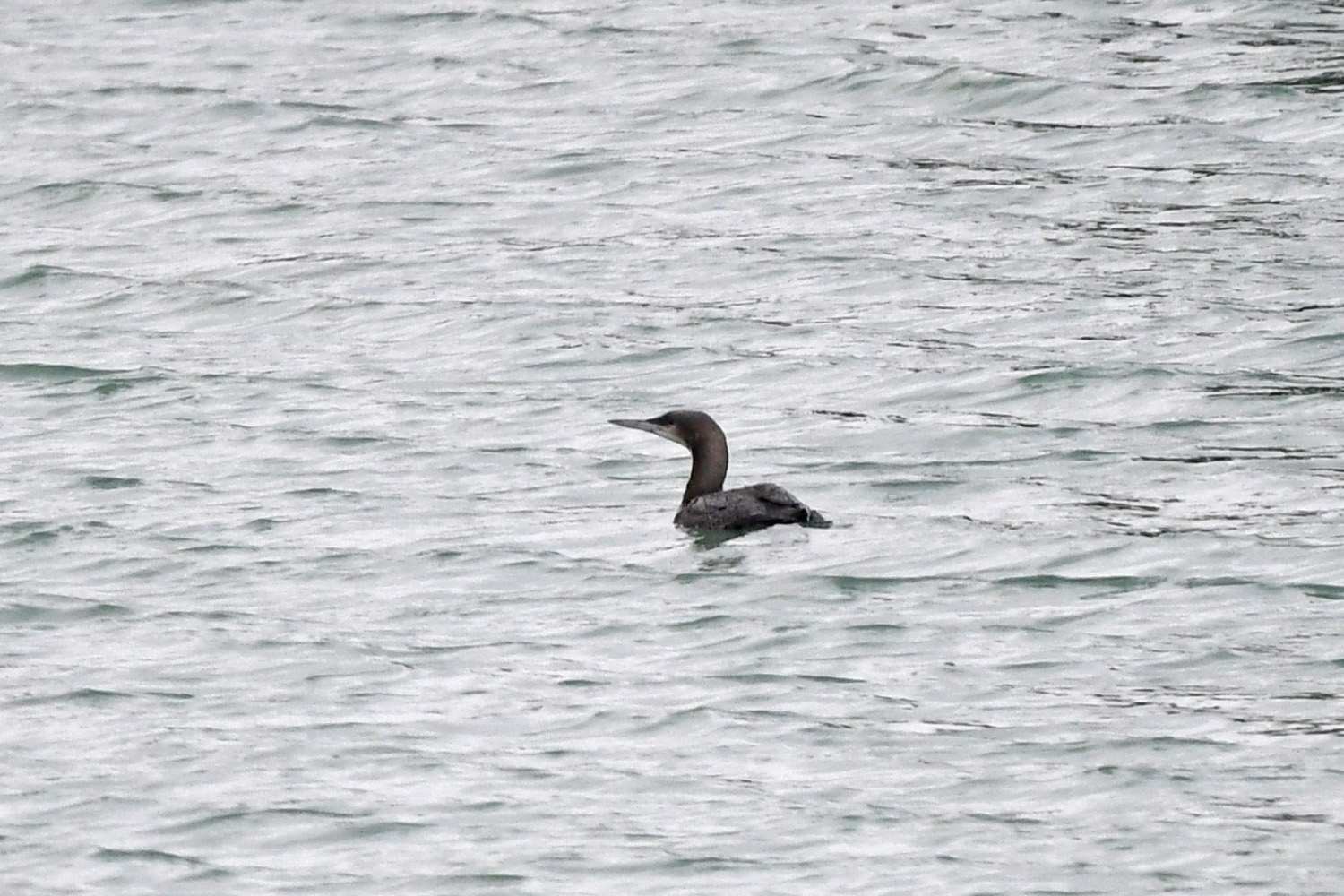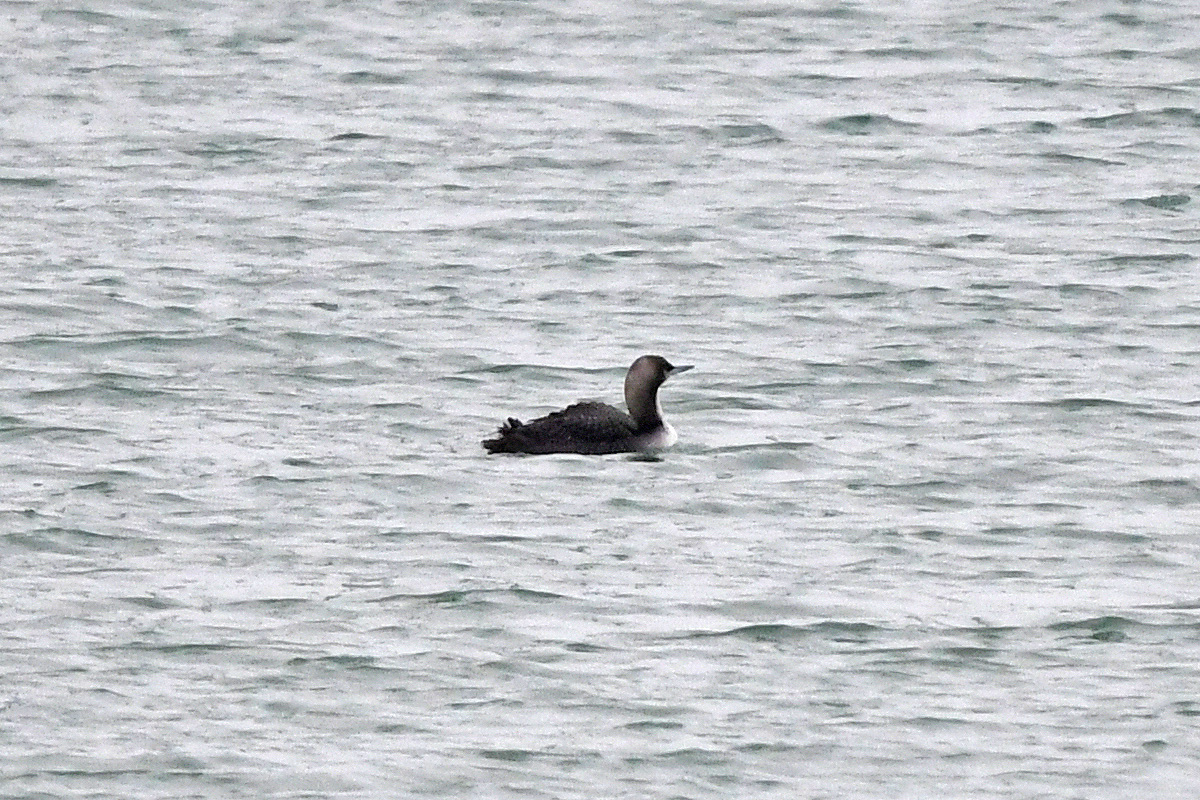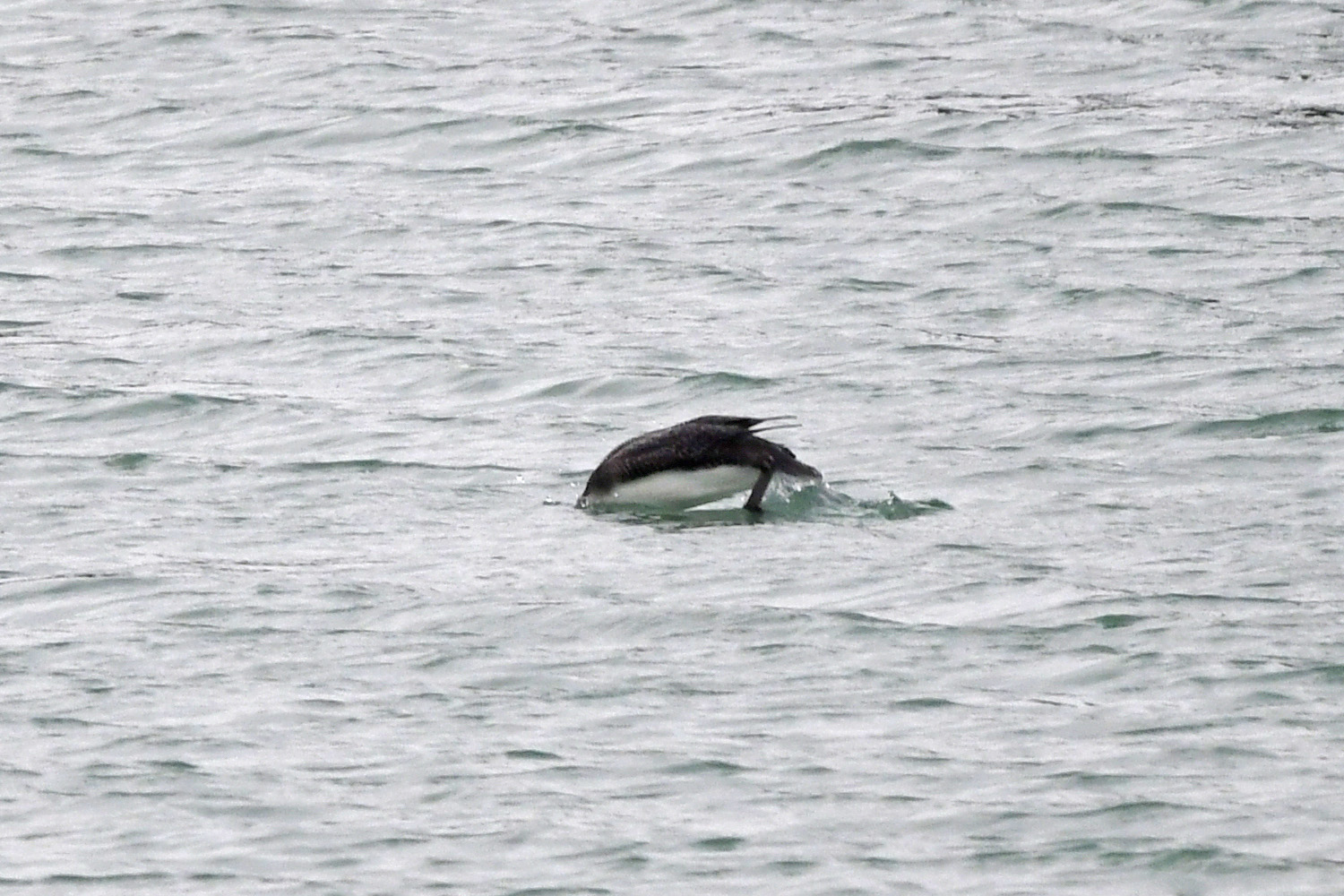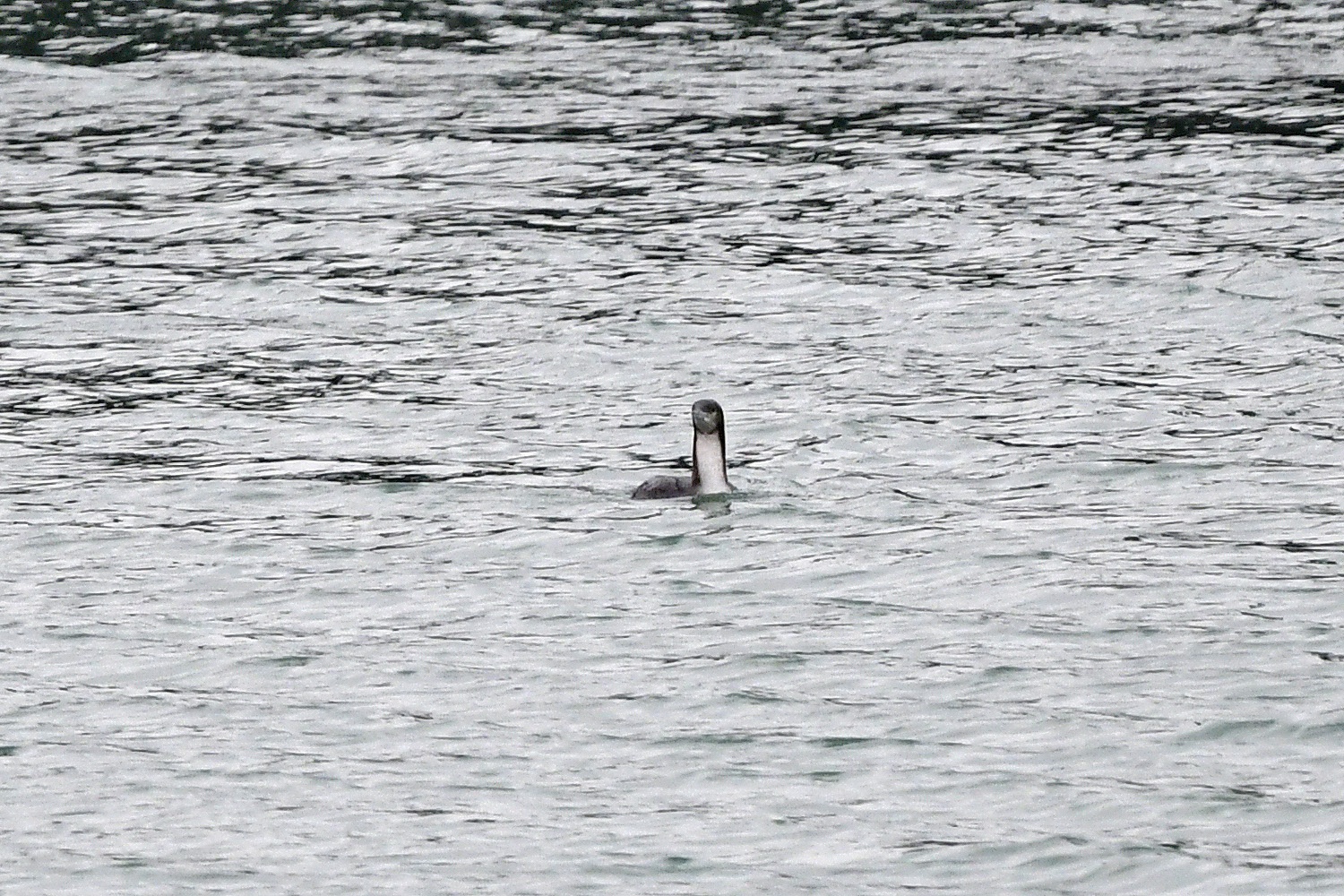
On Friday 3 January 2025 Sven Valkenburg was birding along the Oosterscheldekering (Zld) when
at 12:59 hours he checked an Black-throated Loon Gavia arctica that was present in the Roompotsluis Binnenhaven. The bird was not showing a white thigh patch, so Sven started to get nervous if it maybe could very well be a Pacific Loon Gavia pacifica. It took him an hour or more to be sure as the bird was actively diving and the harsh windy conditions make the observation not easy. But at c 14:20 the news was made publicly known on the Dutch Bird Alert system and in several whatsapp groups. The pictures showed there could be little doubt, so when the bird came closer and more photographs were made, it became obvious the first Pacific Loon was swimming in the Netherlands!
The bird swam out of the secluded harbour into the Oosterschelde, a large tidal estuary and was seen till 17:00 hours when it became dark. A diver was seen flying north, just after 17:00 hours. The next day a large crowd gathered and spread around Neeltje Jans and at 9:14 hours Arie-Willem van der Wal and Lennart Verheuvel
saw the Pacific Loon flying in at the Vluchthaven on the North Sea side of work island Neeltje Jans. There it stayed the whole day and c 1000 birders came here to see this new species for the Netherlands.
I saw it too on 4 January 2025. I could not make it in time on 3 January, but since almost all records in Europe were long-stayers, I wasn't that scared to miss it. The bird was present till at least 7 February 2025.





It was accepted as the first record for the Netherlands.
In Europe the first record was in the UK at the Farnham Gravel Pits from 12 January to 4th February 2007 and till 2023 the UK has 12 records. Since that first record in 2007 there have been records in Ireland (2010, 2014, 2017, 2018, 2020 with several returning individuals), Northern Ireland (2014), Finland (2010), Norway (2015, 2016, 2021 (two), 2023), Switzerland (2015), Sweden (2015 and 2023), Spain (2009 and 2018), Poland (2021), Denmark (2018 and two in 2023) and even Israel (2023). Source: Tarsiger.
Go to the main-index, the 2025-index or the next new species, the Spectacled Eider?